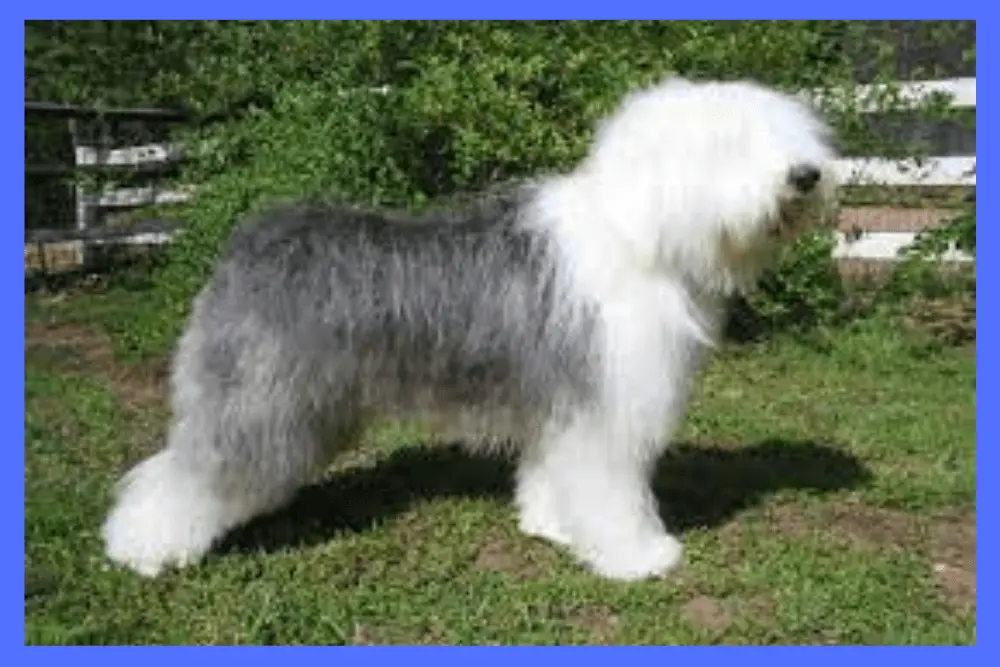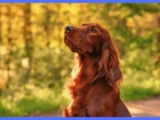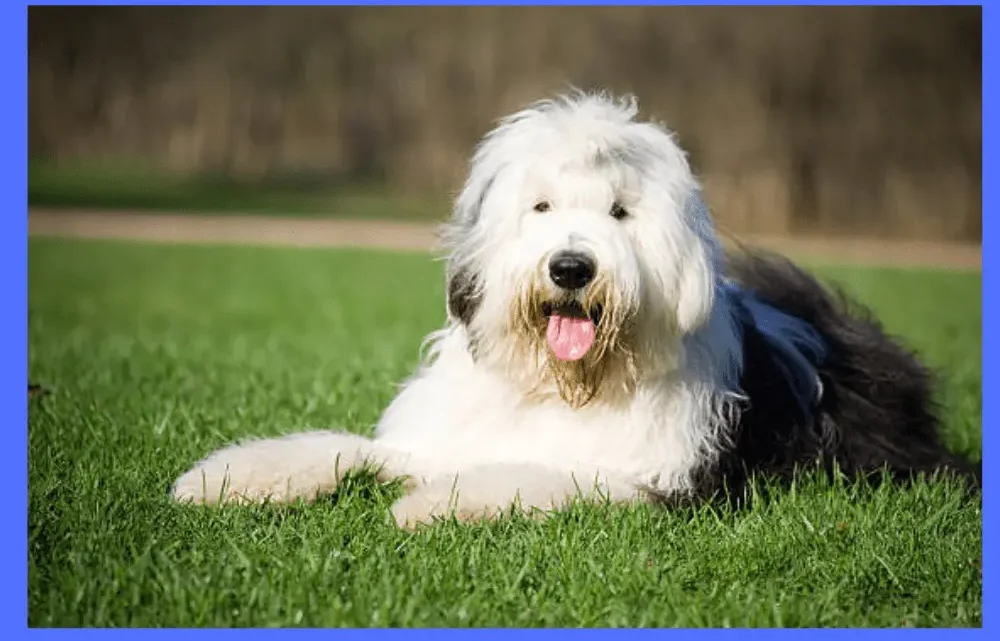
Do Old English Sheepdogs Shed A Lot? Shedding Habits Explained
Do Old English Sheepdogs Shed a Lot?
How Much Do Old English Sheepdogs Shed?
Let’s not sugarcoat it—Old English Sheepdogs shed a fair amount. These dogs have a thick double coat, and while it’s part of their charm, it’s also a big reason they shed so much. The outer coat is long and profuse, while the undercoat is dense and woolly. So, yeah, there’s a lot of fur that comes off. You can expect to see hair on your furniture, clothes, and pretty much everywhere. But here’s the thing: shedding doesn’t mean constant shedding.
Is Shedding Constant or Seasonal?
Here’s where it gets interesting. Old English Sheepdogs are not always shedding in a constant stream. Instead, their shedding is more seasonal. In spring and fall, when they shed their undercoat to adjust to temperature changes, it’s a full-on fur explosion. During these peak shedding seasons, you’ll need to groom them more frequently to manage the volume of hair.
Outside of those periods, shedding tends to be a bit more controlled. But let’s be real—there’s no escaping a few stray hairs here and there. It’s just part of life with an Old English Sheepdog. So, while it might not be a daily fur storm, you’ll definitely need to stay on top of grooming to keep things from getting out of hand.
Breed Overview
| BREED SIZE | Large |
| WEIGHT | 60–100 pounds |
| HEIGHT | 21+ inches |
| LIFE SPAN | 10–12 years |
| TEMPERAMENT | Gentle |
| SHEDDING LEVEL | Moderate |
| EXERCISE NEED | 20-40 minutes/day |
| BARKING LEVEL | Moderate |
| ENERGY LEVEL | Average |
| BREED GROUP | Herding |
| COAT LENGTH | Long |
| COLOURS | Black, White, Blue, Fawn, Gray |
| Overall Grooming Requirements | High |
Old English Sheepdog Info
Why Do Old English Sheepdogs Shed?
What Causes Shedding in Old English Sheepdogs?
Old English Sheepdogs shed primarily because of their unique double coat. It’s like they’re wearing a cozy, thick sweater all year round. But, like any good sweater, it eventually needs a little refresh. Shedding is just the natural way their bodies manage this heavy coat. It’s not that they want to leave hair everywhere, it’s just the way their fur cycles. Dogs shed to make room for new hair to grow—think of it as spring cleaning for their coat.
But there’s more to it. Shedding in Old English Sheepdogs can also be influenced by their age, diet, and health. A younger dog might shed more as it goes through growth stages, while an older dog might shed due to hormonal changes. Stress, too, can play a part—just like how humans might lose hair when they’re stressed. So, it’s not just a “coat thing,” it’s a whole-body process.
How Does Their Coat Contribute to Shedding?
The Old English Sheepdog’s coat is both its charm and its challenge. They have a dense, double-layered coat made up of a soft undercoat and a longer, coarser outer layer. This is part of their heritage, designed to keep them warm while working outdoors in cold weather. The undercoat sheds twice a year, in spring and fall, as the weather changes, while the topcoat sheds more gradually.
Here’s the kicker: the shedding isn’t always as easy to spot as with other breeds. Their thick, long hair can hide the shedding, so you might only notice it after a grooming session when you see clumps of hair flying around. But don’t be fooled. Their coat might look luxurious, but it requires serious upkeep to avoid matting—and let’s be honest, that’s when the shedding really gets messy.
So, shedding for Old English Sheepdogs? Yeah, it’s inevitable. But understanding why it happens and how their coat works can make dealing with the hairball army that comes with it a lot easier.
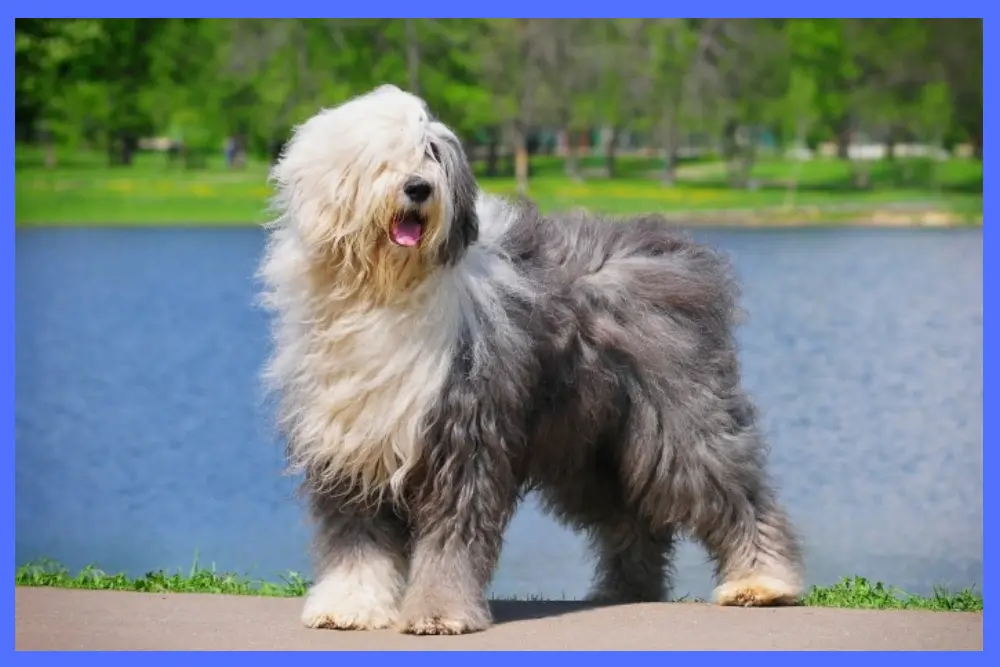
Old English sheepdog puppies, like puppies of any breed, benefit greatly from early socialization and training
How Can You Manage Old English Sheepdog Shedding?
How Often Should You Groom an Old English Sheepdog to Minimize Shedding?
When it comes to managing shedding, grooming is your best friend. For an Old English Sheepdog, regular grooming isn’t just a suggestion—it’s a necessity. Ideally, you should be brushing them at least 2-3 times a week, especially during shedding seasons (spring and fall). Why? Their dense double coat can easily become matted, and mats trap hair, causing it to fall off in clumps. It’s a cycle you want to avoid.
But, let’s be real: brushing them can feel like a workout. These dogs are big, and their coats are thick. So, if you’re not brushing them regularly, it’s like setting yourself up for a major mess down the road. And trust me, you’ll be surprised how much hair can pile up after a couple of missed sessions. Even if you’re not actively seeing it, the hair is coming off—you’re just making life harder if you skip this step.
What Are the Best Tools for Grooming an Old English Sheepdog?
Now, let’s talk about the tools you’ll need. The right brush can make all the difference. You’ll need something that can handle that dense undercoat while also detangling the longer outer coat. Here’s what you’ll want in your grooming kit:
Slicker Brush: A good slicker brush is essential. It helps remove loose hair and detangle mats in the topcoat. Use this regularly to keep the shedding manageable and their coat looking smooth.
Undercoat Rake: This tool targets the undercoat specifically. It’s perfect for those heavy shedding seasons when the undercoat is shedding like crazy. It removes dead hair without pulling at the coat too much.
Pin Brush: A pin brush works wonders for keeping the coat fluffy and tangle-free, especially on the outer layer. It’s gentle but effective for detangling.
De-shedding Tool: If you’re dealing with extra shedding, consider using a de-shedding tool like a Furminator. This helps remove undercoat hair efficiently without hurting the skin.
Shampoo and Conditioner: While not exactly “tools,” a good dog-friendly shampoo can make a big difference in how much hair sheds. Look for shampoos that promote healthy skin and coat. This reduces excess shedding caused by irritation or dry skin.
If you’ve got the right tools and set a grooming routine, you’ll manage the shedding with less hassle. The key is consistency, and, of course, patience. Yes, it can be a bit time-consuming, but trust me, regular grooming beats dealing with hair tumbleweeds all over your house.
Can You Reduce Shedding in Old English Sheepdogs?

Old English sheepdogs need regular grooming, physical activity, and mental challenges to thrive as pet in the home.
Does Diet Play a Role in Shedding Reduction?
Diet can influence shedding, though it won’t stop it completely. A healthy coat starts with a healthy dog, and what goes into their body matters. Adding omega-3 fatty acids, like those in salmon or flaxseed, can improve coat quality and reduce shedding caused by dry skin. Look for dog foods rich in these nutrients or add a fish oil supplement to their meals. It won’t work overnight, but consistent, nutrient-rich feeding will help keep your dog’s fur looking healthier and shedding less.
Are There Any Supplements or Products That Help with Shedding?
Supplements and grooming products can help manage shedding, but they’re not quick fixes. Here are a few options:
Omega-3 Supplements: These help nourish the skin and coat from within, reducing excess shedding caused by dry or irritated skin. But check with your vet for proper dosage.
Deshedding Shampoos: Shampoos with soothing ingredients like aloe or chamomile help reduce shedding by calming the skin and keeping the coat soft.
Furminator Tools: Not a supplement but using a de-shedding tool like the Furminator can help reduce shedding over time by removing loose hair before it hits the floor.
Anti-Shed Sprays: While these can help condition the coat and reduce loose hair, don’t expect instant miracles—they’re more of a supplementary solution.
Reducing shedding is about a multi-pronged approach: proper diet, consistent grooming, and sometimes targeted products. It won’t completely eliminate shedding, but it can make it far more manageable.
Also Read Here:
Effective Home Remedies For Matted Dog Hair
Are There Any Health Issues Linked to Excessive Shedding?
Excellent pets, Old English sheepdogs require time and money to train and keep clean
What Are the Signs of Abnormal Shedding in Old English Sheepdogs?
While shedding is normal for Old English Sheepdogs, excessive shedding could be a red flag. If you’re finding huge clumps of hair falling out unexpectedly or if your dog’s coat looks patchy and uneven, something might be off. Healthy shedding should look more like a gradual loss of hair—kind of like a soft snowfall. But if it’s happening faster than usual, or if their skin looks irritated, inflamed, or has bald spots, that’s when you need to pay attention.
Other signs to watch for include excessive scratching, licking, or chewing, which can indicate skin issues or allergies causing the shedding. If your dog seems uncomfortable, stressed, or if their coat becomes dull and brittle, it’s time for a check-up with the vet.
Could Shedding Be a Sign of a Health Problem?
Yes, shedding can sometimes point to health issues. In fact, it’s often one of the first things dog owners notice when something’s wrong. If your Old English Sheepdog’s shedding suddenly spikes, it could be linked to:
Allergies: Dogs can have environmental or food allergies that lead to excessive shedding. Things like pollen, dust mites, or even certain ingredients in their food could trigger this.
Hormonal Imbalances: Conditions like hypothyroidism or Cushing’s disease are known to affect shedding. If the shedding comes with other symptoms like lethargy, weight gain, or changes in appetite, get your dog checked out.
Fleas or Skin Infections: Parasites or bacterial/yeast infections can cause itching and hair loss. If the shedding is accompanied by itching, scabs, or sores, these could be the culprits.
Poor Diet or Nutritional Deficiencies: A poor diet can result in a lack of essential nutrients, leading to poor skin and coat health. A lack of omega-3 fatty acids, for example, could leave your dog’s coat dry and shedding more than usual.
While shedding is normal, if it’s causing you stress or if your dog is acting off, it’s important to check in with your vet. Shedding can be an indicator of something more serious, so don’t just chalk it up to “it’s just a lot of hair.” Your dog’s health is worth the investigation.
Common Myths About Old English Sheepdog Shedding
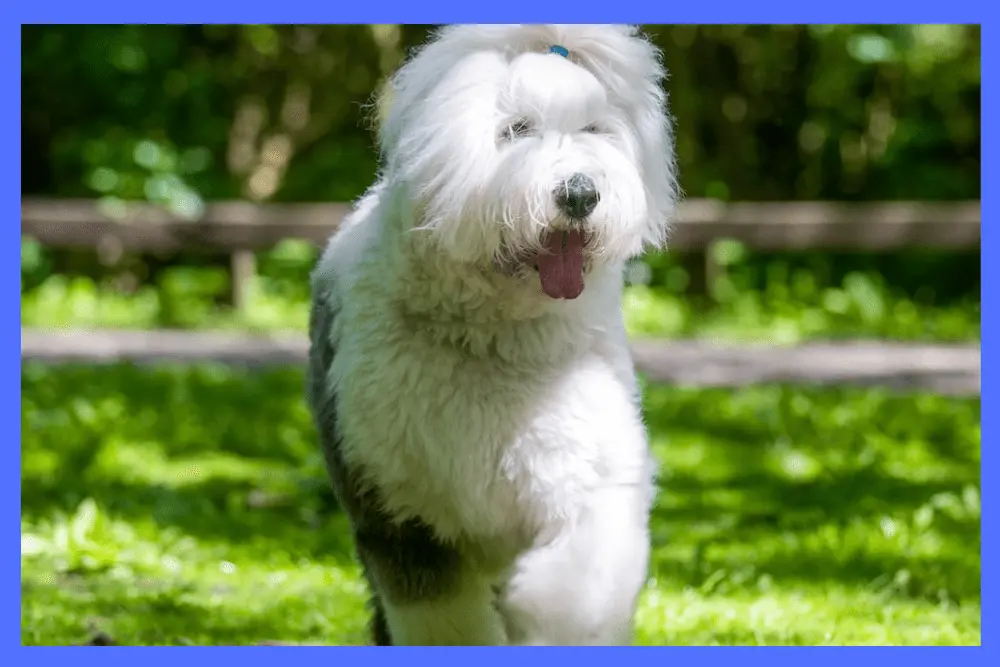
Maintaining a healthy and regular food for your dog reduces obesity and health issues. Shaggy hair of old English Sheepdog makes it hard to see weight gain.
Do Old English Sheepdogs Shed More Than Other Breeds?
It’s easy to assume that Old English Sheepdogs shed more than other breeds because of their thick, fluffy coats. But in reality, they don’t shed more than other large breeds like Golden Retrievers or Siberian Huskies. What makes them seem like major shed machines is the volume of hair they shed and their grooming needs. Because of their dense double coat, the hair they lose can clump together and stick around, making it appear as though they’re shedding all the time. The shedding is definitely noticeable, but it’s about maintenance, not necessarily volume.
So, if you’re comparing their shedding to smaller dogs or low-shedding breeds, yes, it’s a lot. But when placed side by side with other large, double-coated breeds, they’re pretty much on par. The key takeaway? Regular grooming makes all the difference.
Are Old English Sheepdogs Hypoallergenic?
Here’s the thing: Old English Sheepdogs are not hypoallergenic. I know, that’s a bit of a letdown for anyone hoping to find a hypoallergenic dog that doesn’t shed. The truth is, no dog is completely hypoallergenic. Old English Sheepdogs may shed less than some, but they still produce dander, which is the primary culprit for allergies.
Their dense coat can trap more dander, which is released when they shed. Even though some people with allergies might have a better experience with breeds that shed less, it’s important to note that these dogs aren’t allergy-friendly. If you have severe allergies, it’s always best to spend time with the dog before deciding to bring one into your home.
Conclusion
So, do Old English Sheepdogs shed more than other breeds? Not really. While their thick, double coat can make it seem like they’re shedding more, they’re pretty on par with other large breeds like Golden Retrievers. The key difference is the volume of hair they shed and the grooming they need to keep it under control.
When it comes to managing shedding, regular grooming is a must—brushing a few times a week (especially during shedding seasons) is your best friend. Proper diet and the right grooming tools also go a long way in keeping things manageable.
Final thoughts: owning an Old English Sheepdog is a rewarding experience, but it does come with its fair share of hair. If you’re prepared to commit to grooming and are okay with the occasional fur explosion, this breed can be a fantastic, lovable companion. Just be ready to vacuum… a lot.
References:
American Kennel Club (AKC): Information on Old English Sheepdog breed standards, including their coat and grooming needs.
The Kennel Club (UK): Detailed breed profile for Old English Sheepdogs, covering their characteristics, grooming, and shedding habits.
Vetstreet: Veterinary advice on shedding in dogs, with insights on how diet, health, and grooming impact shedding.
PetMD: Articles on dog health, shedding, and the relationship between coat care and skin health.
The Spruce Pets: Pet care resources, including tips on managing shedding and grooming different dog breeds.
Furminator: Product information and expert advice on tools for managing dog shedding.

